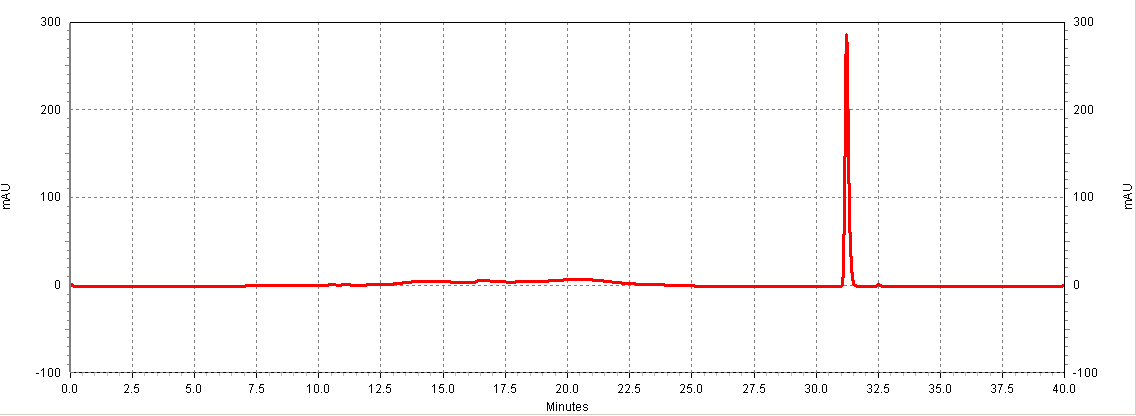Team:Rice University/RESULTS
From 2008.igem.org
(→HPLC: Calibration) |
(→C. HPLC Data) |
||
| Line 27: | Line 27: | ||
=== C. HPLC Data=== | === C. HPLC Data=== | ||
| - | To analyze our beer samples for resveratrol content, be will be using '''H'''igh '''P'''erformance '''L'''iquid '''C'''hromatography (HPLC), which will allow us to separate the metabolites produced by the yeast and analyze these compounds by spectrophotometry. By comparing HPLC chromatogram peaks of metabolites produced by our yeast with a resveratrol-only standard, we can identify if resveratrol is being produced, and at what quantities. Below, we show our initial data for HPLC calibration curves using known quantities of resveratrol and p-coumaric acid standards and test chromatograms using extracts from different wine samples. | + | To analyze our beer samples for resveratrol content, be will be using '''H'''igh '''P'''erformance '''L'''iquid '''C'''hromatography (HPLC), which will allow us to separate the metabolites produced by the yeast and analyze these compounds by spectrophotometry. By comparing HPLC chromatogram peaks of metabolites produced by our yeast with a resveratrol-only standard, we can identify if resveratrol is being produced, and at what quantities. We will be monitoring the production of resveratrol and the consumption of p-coumaric acid, which will only be added to the media for the 4CL::STS-integrated yeast; the 4CL::STS+TAL . Below, we show our initial data for HPLC calibration curves using known quantities of resveratrol and p-coumaric acid standards and test chromatograms using extracts from different wine samples. |
{|align="center" style="background-color:#FFFF99; text-align:left" border="1" cellpadding="0" width="50%" | {|align="center" style="background-color:#FFFF99; text-align:left" border="1" cellpadding="0" width="50%" | ||
| Line 42: | Line 42: | ||
::''Sample injection volume'': 25 microliters | ::''Sample injection volume'': 25 microliters | ||
|} | |} | ||
| - | [[Image:HPLC_RSV_example.jpg|center|thumb|600px|Figure C1. Example HPLC chromatogram of a resveratrol standard.]] | + | [[Image:HPLC_RSV_example.jpg|center|thumb|600px|Figure C1. Example HPLC chromatogram of a trans-resveratrol standard.]] |
===== HPLC: Calibration===== | ===== HPLC: Calibration===== | ||
| - | [[Image:RSV_standards.jpg|center| | + | [[Image:RSV_standards.jpg|center|thumb|600px|Figure C2: trans-resveratrol standards (Sigma). Different serial dilutions are shown: 20 ug/mL (red), 10ug/mL (purple), 5ug/mL (blue), 2.5ug/mL (green).]]<BR> |
| - | [[Image:Coumaric_standards.jpg|center| | + | [[Image:Coumaric_standards.jpg|center|thumb|600px|Figure C3: p-Coumaric acid standards (Sigma). Different serial dilutions are shown: 18.5ug/mL (red), 9.25ug/mL (purple), 4.63ug/mL (blue), 2.3ug/mL (green).]]<BR> |
| + | |||
| + | [[Image:RSVandCoumaric.jpg|center|thumb|600px|Figure C4: trans-resveratrol and p-coumaric acid separate at different times; this will allow us to resolve both molecules in a complex mixture, such as a yeast extract.]]<BR>]] | ||
===== HPLC: Wine Extract Tests===== | ===== HPLC: Wine Extract Tests===== | ||
Revision as of 02:25, 30 October 2008
|
|
 "
"






